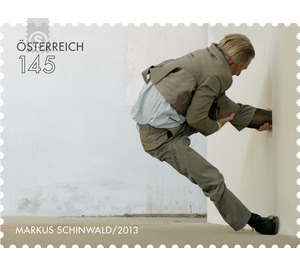Modern Art - Austria / II. Republic of Austria 2013 - 145 Euro Cent
Theme: Art & Culture
| Country | Austria / II. Republic of Austria |
| Issue Date | 2013 |
| Face Value | 145.00 |
| Edition Issued | 270,000 |
| Printing Type | offset |
| Stamp Type | Commemorative |
| Item Type | Stamp |
| Chronological Issue Number | 2445 |
| Chronological Chapter | OOS-OE2 |
| SID | 104806 |
| In 56 Wishlists | |
With Markus Schinwald, one of the internationally most respected artists of his generation, the interesting series "Young Art in Austria" is now continuing. The brand image shows a still image from the video art work "Orient, 1st part", which was shown in 2011 at the renowned Venice Biennale in the Austria Pavilion. Markus Schinwald, born in Salzburg in 1973 and now working in Vienna and New York, originally comes from the field of fashion. The young artist, a graduate of the Linz University of Art, uses not only painting but also the medium of performance as well as photography and video art. In his highly independent work, he confidently uses a variety of media to trace his main artistic theme - the human body as a cultural construct between self-expression and discipline, convention, correction, neurotic tics and unexpected grace - in a variety of ways. Deformations of the psyche find strange physical correspondences; Influences from art history and consumer culture, from critical theory, film history and TV presence, choreography, set design and the world of variety are in Schinwald's work clearly. His protagonists are often constrained in extraordinary spaces, twisting into unnatural actions and creating thereby surreal situations. In his works, he also processes impulses from the field of opera, deals with genres in the entertainment industry and, moreover, establishes an interpretive reference to Sigmund Freud's theories. The idea that an intense mental state also appears physically as a thread runs through his expressive work. No doubt: Schinwald's art is at the center of the sense of time, and it tells of the conflict of life between coercion and play, subjugation and liberation, failure and elegance. His exhibitions - including the Frankfurter Kunstverein, the Essl Museum, Linzer Lentos and the Palais de Tokyo in Paris - define themselves as highly complex arrangements, the tension of which often arises from an irritating contradiction between emotionally and aesthetically charged attraction and stubborn refusal of a one-dimensional offer of meaning , Markus Schinwald's most important awards include the Vienna Prize for Fine Arts (2007) and the Grand Art Prize of the Province of Salzburg (2008).


